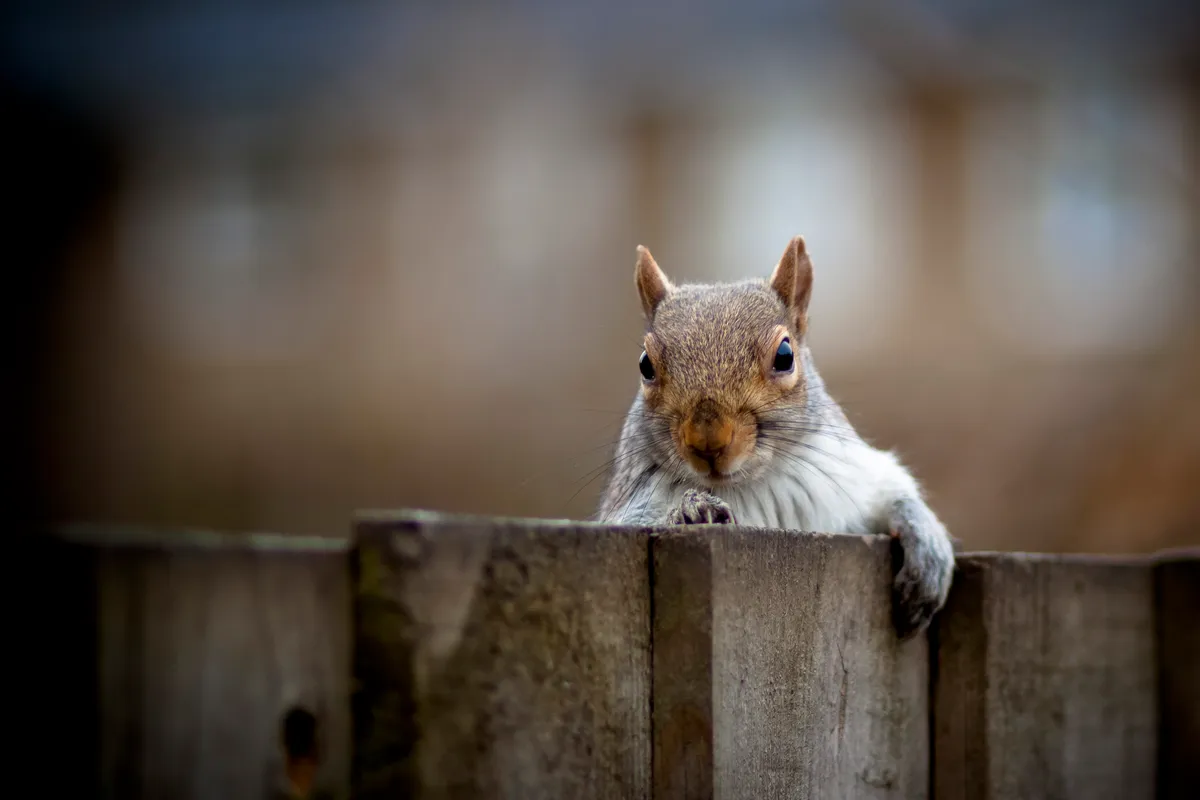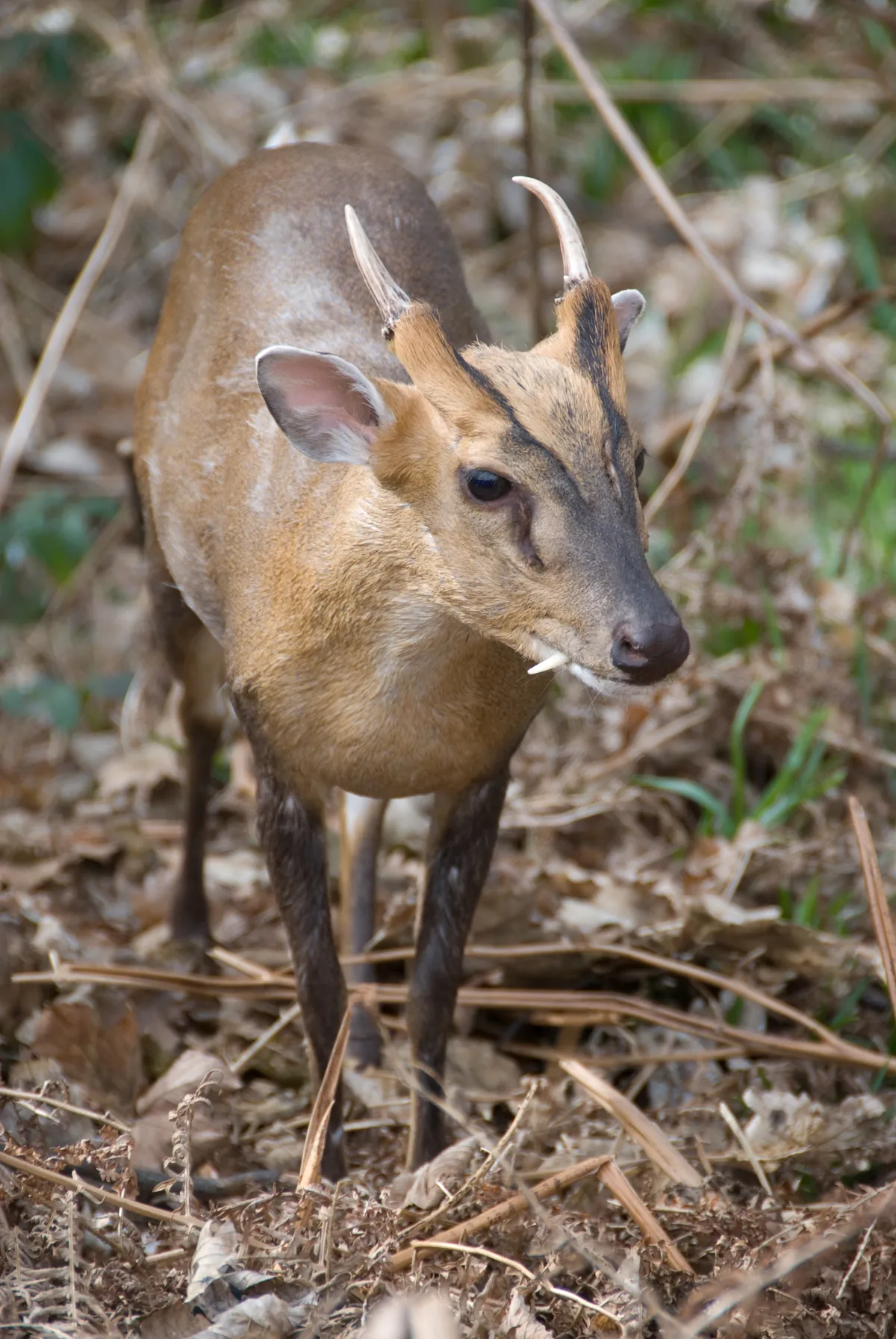The Non-native Species Secretariat (NNSS) has the responsibility for helping to coordinate the approach to invasive non-native species in Great Britain.
The following species are examples of non-native invasive species which have either become established in Great Britain and are causing problems, or are present in the UK and likely to cause a significant negative impact if they become more widespread.
1
Japanese knotweed

Originally from eastern Asia, the Japanese knotweed introduced to Great Britain by the Victorians in 1886 as an ornamental garden plant.
It is now widely established across most of Great Britain, and is notorious for forming dense stands which are extremely hard to control. This makes it one of the most frustrating invasive species in the UK because it would be virtually impossible to fully eradicate it. It is estimated that the Japanese knotweed costs the economy £166 million a year.
2
Asian hornet

This invasive non-native insect is from Asia and is a voracious predator of honeybees and other insects. It was detected in the UK for the first time in September 2016.
The Animal and Plant Health Agency quickly located and destroyed the hornet nest, but it is possible this that species could reappear.
There is a new app available with detailed guidance on identifying the Asian hornet, and the common species that it could be confused with, and to submit any suspected records.
3
Rhododendron

Rhododendron was first introduced in 1763 from the Iberian Peninsula for use in gardens, and there are now few areas of Great Britain that are not affected by this invasive plant.
The rhododendron blocks light, preventing other species from growing beneath it and leaving only trees that are able to grow above the level of the rhododendron canopy. It also carries diseases which are fatal to some of our native trees.
4
American bullfrog

This American native has earned the reputation as one of the most harmful invasive amphibian species. Not only does it feed day and night on a wide range of prey, but also carries a disease that has led to worldwide amphibian decline and several global extinctions.
In the past bullfrogs have been kept as pets and deliberately released into the wild – it is advised not to release any unwanted pets as it could be bad for the animal and could harm native wildlife.
5
Grey squirrel

Originally a native of North America, grey squirrels were deliberately released into the wild in Great Britain in 1876, and carry a pox virus to which our native red squirrel is very susceptible.
Red squirrels have now been wiped out across most of Great Britain, mainly through disease transmission, and now only a few populations remain in England and Wales. Fortunately, red squirrels still have a stronghold in Scotland and dedicated programmes are helping to ensure their conservation against the constant threat of the invasive red squirrel.
6
Water primrose

This highly invasive freshwater weed from South America was originally introduced to Europe for its attractive yellow flowers. In France (where it has now become widespread) it blocks waterways and takes over ponds and lakes, forcing out native wildlife and causing flooding.
Water primrose is currently only established in a small number of sites in England and Wales, but if it were to establish widely in Great Britain, it would cost millions to manage.
The Environment Agency is working to eradicate existing populations, and gardeners are asked to Be Plant Wise and avoid dumping aquarium or pond plants in the wild.
7
American mink

Another American native, mink were introduced to Great Britain in 1929 for use in fur farming but individuals began to escape from farms and breed in the wild.
Since their introduction, the native water vole has experienced one of the most rapid and serious declines of any British wild mammal during the 20th century. There has been a decline in as much as 94 per cent in the number of water vole sites, and predation by the invasive American mink has been a key factor in this decline.
8
Sacred ibis

These striking African birds were very popular in European zoos in the 1970s and 80s, and there were established free-flying colonies within their grounds. Unfortunately this led to escapes, which are a serious problem for other wildlife.
In France, where they are established, their diet includes fish, small rodents, amphibians, and the eggs and young of other bird species including terns. A number of individuals have been spotted wild in Britain.
9
Floating pennywort

This North American aquatic plant was first recorded in the wild in Great Britain in 1990, having spread from garden ponds and aquaria into the wild.
Floating pennywort can grow up to 20cm in a day, quickly covering whole water bodies and harming aquatic wildlife by blocking out light and reducing the oxygen available in the water. The dense mats can also interfere with recreational activities like angling, and make it difficult for boats to move around, making floating pennywort a particularly tricky invasive plant.
10
Muntjac

This small deer from China and Taiwan was brought to Great Britain in 1831 to be kept in collections, but is now common across most of England and parts of Wales.
Muntjac grazing can have serious impacts in woodlands where they can clear shrubs and prevent tree regeneration, affecting other wildlife including birds and butterflies.
11
Topmouth gudgeon

Originally from eastern Asia, this small fish breeds very quickly. It harms both native and farmed fish by eating other young fish and eggs, and spreading disease.
The Environment Agency is trying to eradicate topmouth gudgeon from a small number of ponds where it has been introduced.
12
American skunk cabbage

Another invasive plant from North America, the American skunk cabbage was introduced in 1947 by ornamental plant collectors, who admired its striking flowers.
It has become established in some wet woodlands, where it crowds out native plant species and makes its presence known by emitting a strong skunk-like odour.
13
Raccoon

This distinctive American animal is not established in Great Britain, but individuals do occasionally escape from private collections.
While they may look cute in cartoons, raccoons may threaten native wildlife, including vulnerable bird species. They can also carry rabies and other nasty diseases which can harm humans and animals.
14
Carpet sea squirt

This marine hitchhiker from the North West Pacific was first discovered in Great Britain in 2008. While each individual organism is tiny (only 1mm long), carpet sea squirt grows in colonies which can cover several square kilometres, and any other species which get in the way.
It is a nuisance for anglers and boat owners as it clogs up fishing equipment, covers boat hulls, and smothers reefs.
15
Pitcher plant

This strange looking North American plant is a threat to our bog communities as it reduces the cover of native plant species, including mosses, which can impact on peat formation.
Pitcher plants are carnivorous, feeding on insects that are trapped in their pitchers, which may impact on insect communities. Volunteers from the New Forest Non-native Plants Project are helping to clear this plant from the New Forest.
16
Signal crayfish

This lobster-like freshwater species was introduced from America in 1975 to be farmed for food, but quickly escaped and spread rapidly through Great Britain.
Since its arrival it has driven the white-clawed crayfish towards extinction through competition and transmission of a crayfish plague, which doesn’t harm signal crayfish but is fatal to white-clawed crayfish. It also burrows into riverbanks leading to erosion and increasing flood risk.
17
Quagga mussel

This tiny freshwater mussel from eastern Europe breeds extremely fast and grows in dense colonies, which can be an expensive nuisance when clogging water treatment pipes.
Anglers, boaters and other water users should remember to Check Clean Dry after leaving the water to help prevent this mussel, and other invasive aquatic species, from spreading via clothing and equipment.
